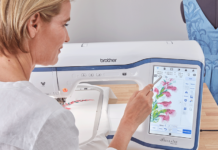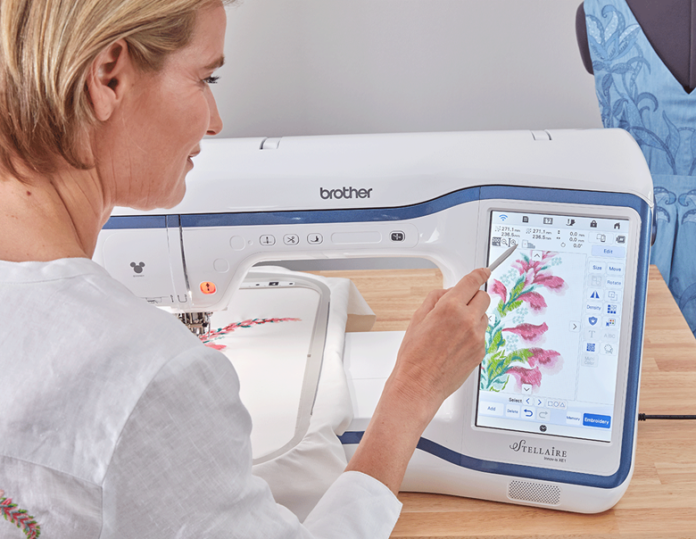Introduction
In a world where branding is everything, standing out visually is crucial. While digital marketing and online presence are vital, your physical brand representation—the stuff people wear, see, and touch—matters just as much. That’s where digitized embroidery designs enters the scene.
Gone are the days of basic screen-printed logos or generic patches. With digitized embroidery, your brand can be represented in high-quality, textured, and visually appealing threadwork that makes a lasting impression. Whether you’re designing uniforms, merchandise, or promotional products, embroidery adds that tactile, polished edge.
Let’s dive into how to elevate your brand with digitized embroidery design and why it’s more than just fancy stitching.
What Is Digitized Embroidery Design?
From Pixels to Thread: A Quick Breakdown
Digitized embroidery design is the process of converting digital artwork—like logos or illustrations—into a format that embroidery machines can read. It’s not a simple file conversion. It requires technical skill and artistic understanding to translate flat artwork into dimensional threadwork.
Key Elements of Digitized Embroidery
-
Stitch types (satin, fill, running)
-
Underlay and pull compensation
-
Thread path planning
-
Fabric type considerations
Each of these factors contributes to how your final design looks and holds up on clothing or accessories.
Why Branding Through Embroidery Works
The Power of Perception
First impressions matter. Embroidered logos give an air of professionalism and permanence. They communicate attention to detail, durability, and trust—traits any brand would want to be associated with.
Tactile Marketing
Unlike a digital ad, embroidery is something people can feel. A well-stitched logo on a polo or hat turns your team into walking brand ambassadors. It’s marketing that moves.
How to Elevate Your Brand with Digitized Embroidery Design
1. Choose the Right Artwork
Your logo is the face of your brand, so make sure it’s clean, scalable, and adaptable for embroidery. Intricate gradients or extremely small text may need to be simplified for optimal results.
Pro Tips:
-
Use vector files for clarity (.AI, .EPS, or high-res .PNG)
-
Keep text bold and legible
-
Avoid unnecessary shadows or fades
2. Work with Professional Digitizers
This step is critical. A great design can be ruined by poor digitizing. Professional embroidery digitizing services understand how to:
-
Select appropriate stitch types
-
Account for fabric type
-
Adjust thread density
-
Avoid puckering or distortion
3. Customize for Your Industry
Different industries demand different looks. A sleek, minimal design might suit a tech company, while a bold, detailed design may resonate better in hospitality or retail.
Examples:
-
Construction companies: Heavy-duty jackets and caps
-
Hospitality businesses: Branded aprons and uniforms
-
Fitness centers: Moisture-wicking shirts with stretch-tolerant embroidery
4. Utilize Embroidery for Promotional Merchandise
Branded embroidery isn’t just for employee uniforms. Use it on:
-
Tote bags
-
Hats
-
Beanies
-
Towels
-
Blankets
This turns everyday items into tools for brand visibility.
Key Benefits of Digitized Embroidery Designs for Branding
Visual Consistency
Digitizing ensures that your logo looks identical on every item, no matter the size or material. That kind of consistency strengthens brand recognition.
Durability
Unlike screen printing that can fade or crack, embroidery lasts. It withstands washing, stretching, and the elements—making it ideal for workwear and outdoor gear.
Perceived Value
A stitched logo feels more premium than a printed one. Customers perceive embroidered products as more luxurious, which adds value to your brand.
Mistakes to Avoid When Digitizing Your Logo
Common Pitfalls
-
Using complex gradients that don’t translate well in thread
-
Skipping the underlay, which leads to loose stitches
-
Overly small text that becomes unreadable
-
Wrong file formats submitted for digitizing
How to Prevent Them
-
Consult with a digitizer during the design phase
-
Request a sample stitch-out before mass production
-
Choose fabrics suited for embroidery (e.g., stable, non-stretch materials for beginners)
What to Look for in a Digitized Embroidery Service
Must-Have Qualities
-
Experienced digitizers with a solid portfolio
-
Fast turnaround without sacrificing quality
-
Competitive pricing for bulk and custom orders
-
Excellent customer support
Bonus Perks
-
Multiple file format deliveries (.DST, .PES, .JEF, etc.)
-
Revisions included in the pricing
-
Free consultations or design checks
How to Get Started
Here’s a simple checklist for getting your brand embroidered:
-
Finalize a clean, high-resolution version of your logo.
-
Choose items you want to brand (shirts, caps, bags).
-
Find a reputable embroidery digitizing service.
-
Request a stitch-out sample or proof.
-
Approve the design and start production!
Elevating Your Brand, One Stitch at a Time
Digitized embroidery design is more than just a branding trend—it’s a smart investment. It enhances how customers and employees perceive your business while giving your brand a long-lasting presence in the real world.
Whether you’re running a startup or a long-established brand, understanding how to elevate your brand with digitized embroidery design gives you a competitive edge.
Conclusion
So, is it worth it? Absolutely. In a sea of screen-printed shirts and digital ads, embroidery offers something unique: texture, class, and staying power. By incorporating high-quality digitized embroidery into your brand strategy, you’re investing in something that’s not only beautiful but also effective.
Now’s the time to thread your brand into your customers’ memories—one flawless stitch at a time.


















